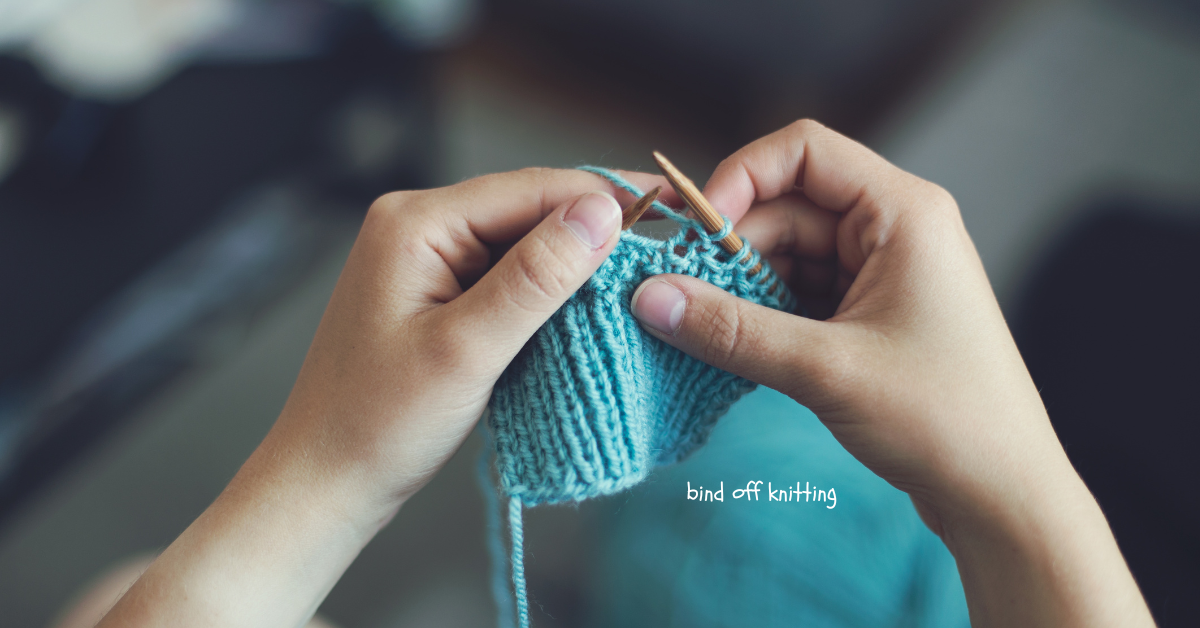Binding off, also known as casting off, is one of the most essential finishing techniques in knitting. Whether you’re making a scarf, sweater, blanket, or any other knitted project, you need to bind off your stitches to secure the edge and prevent your work from unraveling.
In this article, we’ll explain what bind off knitting is, when and how to use it, and introduce a few different methods so you can choose the best one for your project.
What Is Bind Off in Knitting?
Bind off knitting refers to the process of closing the final row of live stitches so that they don’t unravel. Once you’ve finished knitting your last row, the stitches are still “live,” meaning they could easily come undone. Binding off secures them in place and gives your project a finished edge.
The bind off edge should match the tension and stretch of your project, especially in garments or anything that will be worn.
When Do You Bind Off?
You bind off when you’ve completed all your rows of knitting and want to:
- Finish the edge of a scarf or blanket
- Shape an armhole, neckline, or hem in a sweater
- End a sleeve or mitten
- Close off the top of a hat
- Add definition to the edge of your project
It’s usually the last step before blocking and weaving in ends.
How to Bind Off Knitting: The Basic Method
The most common bind off is also called the standard bind off or knit bind off. Here’s how to do it:
Materials:
- Your knitting project still on the needles
- The same yarn you’ve been working with
- A pair of scissors
- Tapestry needle (optional for weaving in ends)
Steps:
- Knit the first two stitches from your left-hand needle to the right-hand needle.
- Use your left needle to lift the first stitch you knit over the second stitch and off the needle.
- Now you have one stitch on your right needle.
- Knit the next stitch on your left needle.
- Repeat the lift-over step: lift the previous stitch over the new one and off the needle.
- Continue until one stitch remains.
- Cut the yarn, leaving a 6-inch tail, and pull it through the last stitch to secure it.
This creates a neat, firm edge that won’t unravel.
Different Bind Off Methods and Their Uses
1. Stretchy Bind Off
Perfect for projects that need extra give, like cuffs, necklines, or hats.
How to do it:
- Use a larger needle size for binding off, or try the “Jeny’s Surprisingly Stretchy Bind Off.”
- This method allows for more elasticity and comfort in wearable items.
2. Purl Bind Off
Works well when your last row is in purl stitch to maintain pattern consistency.
How to do it:
- Purl two stitches.
- Lift the first over the second and off the needle.
- Continue purling and lifting off until finished.
3. I-Cord Bind Off
This decorative bind off gives a rounded, professional finish to edges—especially good for shawls or blankets.
How to do it:
- Cast on 3 extra stitches at the start of your bind off row.
- Knit 2, knit 2 together through the back loop (1 stitch from the live stitches and 1 from the i-cord), slip all 3 stitches back to the left needle.
- Repeat from * to end.
4. Picot Bind Off
Great for lacy projects or adding a decorative edge.
How to do it:
- Cast on 2 extra stitches.
- Bind off 4 stitches.
- Repeat across, giving the edge a scalloped look.
Tips for a Perfect Bind Off
- Don’t pull too tight – A tight bind off can cause puckering or stiffness.
- Use a larger needle for a looser, more flexible edge.
- Match the bind off to your project – Use stretchy bind off methods for garments, firm ones for structure.
- Practice tension – Try a swatch before applying it to your full piece.
- Weave in tails carefully so they don’t come loose or add bulk.
Common Mistakes to Avoid
- Too tight bind off – Can ruin the edge of a flexible project.
- Inconsistent tension – Results in an uneven edge.
- Forgetting to bind off in pattern – Can disrupt the look, especially with ribbing or lace.
- Skipping a stitch – Can lead to unraveling if not caught in time.
When to Use Bind Off Alternatives
In some projects, especially top-down sweaters or shawls, you might use live stitches to join pieces or pick up stitches again later. In these cases, you might not bind off in the traditional way.
Examples:
- Using a three-needle bind off to join shoulders.
- Grafting with Kitchener stitch for seamless joins.
- Crochet bind off for a unique edge or to finish Tunisian crochet.
Final Thoughts
Understanding how to bind off knitting properly is essential for finishing your projects with durability and style. Whether you’re making a simple scarf or an intricate garment, knowing when and how to bind off can make a big difference in how your piece looks and functions.
Experiment with different bind off styles to suit your projects, and practice to find the technique that works best for you. Once you master this step, you’ll be able to confidently complete any knitting pattern with a clean, professional finish.

